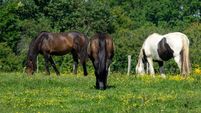EID plan will cut paperwork
Stricter identification and registration of bovine animals and labelling of beef and beef products arrived in the late 1990s, as one of the measures to re-establish consumer confidence in beef and beef products after the BSE crisis.
Since then, throughout the EU, all notifications of births, deaths, and animal movements must be manually registered by farmers, and converted in an electronic format into the national computerised database.













